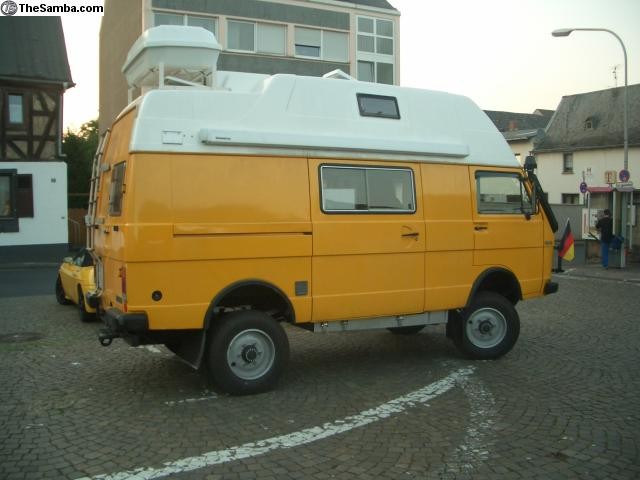The VW LT, particularly the 4×4 version, embodies a unique blend of utility, living space, and off-road capability. While the VW Vanagon, especially the Syncro AWD model, is a popular choice for adventurers, the LT offers a larger, more rugged alternative for serious exploration. This article delves into the history and features of the VW LT, highlighting its evolution from a conventional van to a formidable all-terrain vehicle.
The LT: VW’s First Foray into Serious Trucks
Unlike the rear-engine Vanagon, the LT was VW’s first foray into a conventional front-engine, rear-wheel-drive layout. Designed in the early 1970s, it marked a significant departure from the traditional VW design philosophy. Produced from 1975 to 1996, the LT underwent several upgrades and refreshes during its production run. Initially offered in short and long wheelbase versions, a longer 3650mm wheelbase was later introduced. The LT’s independent front suspension provided superior handling and ride comfort compared to other vans of its era.
Powering the LT: From Audi Engines to Diesel Powerhouses
Initially, the Lt Vw utilized a 2.0L four-cylinder engine sourced from Audi, the same engine found in the Porsche 924. Eventually, this engine was sold to AMC. VW later developed a 2.4L six-cylinder diesel engine, which was also used in Volvo 240 models. This diesel engine evolved over time, incorporating a turbocharger and eventually direct injection (TDI) technology. A gasoline version of the 2.4L six-cylinder engine also replaced the original 2.0L engine.
The Second-Generation LT and the Mercedes Connection
The second-generation lt vw was a collaborative effort with Mercedes-Benz, resulting in the Sprinter. While the VW and Mercedes versions shared development, the VW LT was manufactured in VW’s own factories and featured VW engines, including a 2.8L diesel engine by Brazilian MWM. The current iteration of the LT is known as the Crafter, essentially a rebadged current-generation Sprinter built by Mercedes.
The lt vw 4×4: Conquering Any Terrain
The most remarkable lt vw variant is undoubtedly the 4×4 model. Featuring a central transfer case and solid axles both front and rear, the 4×4 system was developed in-house by VW, not by Steyr-Puch as some might assume. Available in LT 40 and LT 45 versions (denoting maximum vehicle weight), the lt vw 4×4 boasts impressive off-road capabilities. Its reduction gearing and locking differentials enable it to climb inclines as steep as 45 degrees.
Westfalia Conversions: A Home Away From Home
Westfalia, renowned for its camper van conversions, also offered various configurations for the lt vw. These conversions featured the company’s signature ingenuity, incorporating fold-out beds, galleys, and bathrooms. The result was a self-contained mobile living space perfect for extended adventures.
Conclusion: The lt vw – A Legacy of Versatility and Capability
The lt vw, though less known than the Vanagon, represents a significant chapter in VW’s history. From its unconventional design to its impressive 4×4 capabilities, the LT carved a niche for itself as a versatile and capable vehicle, ideal for both everyday use and global exploration. While no longer in production, the lt vw remains a sought-after vehicle for those seeking a robust and spacious platform for adventure.
